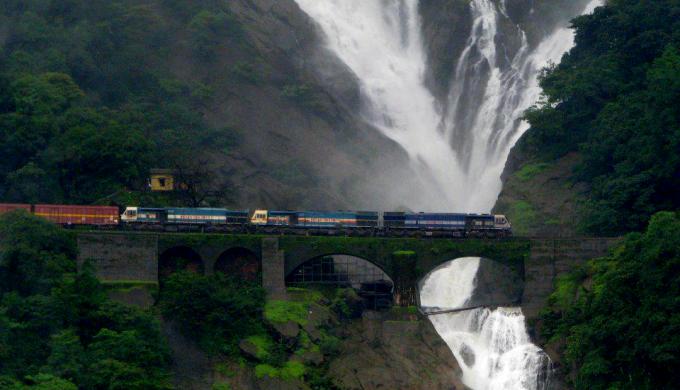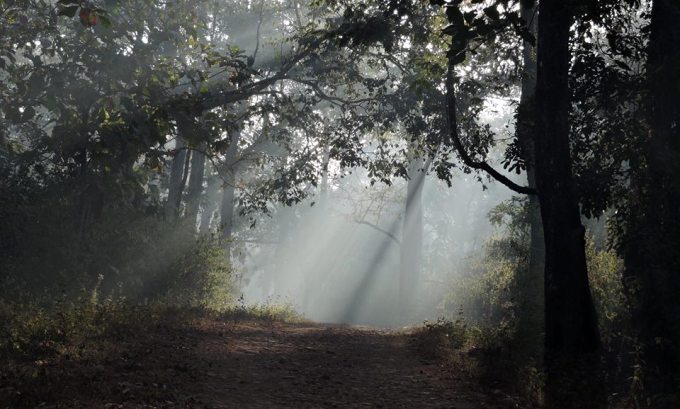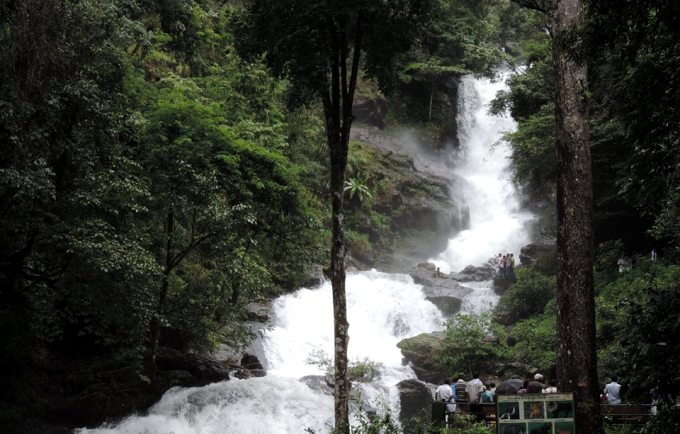On International Day of Forests, scientists say changing patterns in the number of rainy days are adding to the woes of the Western Ghats, already threatened by unplanned developmental activity

(Image by Amit S. Upadhye)
The Western Ghats, one of India’s largest natural carbon sinks and a biodiversity hotspot, is facing a new threat due to changing rainfall patterns besides continuing pressure from developmental activity, recent research indicates. A more uncertain rainfall pattern is one of the biggest impacts of climate change, scientists say.
The Sahyadri, a 1,600km long mountain range that runs parallel to the west coast of India, records more than 500 cm of rainfall in many places but new weather models show that there are now changes that do not bode well for this Unesco World Heritage Site.
The rainfall pattern in the Western Ghats in Kerala is changing for the worse, according to an ongoing study by the Energy and Wetland Research Group of the Bengaluru-based Indian Institute of Science (IISc). The researchers are looking at the rainfall data of the past 100 years and the initial patterns are shocking. In line with other weather models, the latest research is indicating increase in the rainfall volume over a shorter period of time. The study indicates that the rain that earlier fell over four months may now occur within a span of a few days or weeks.

(Image by Amit S. Upadhye)
Ecologists are also worried about temperature variation in the Western Ghats. Even a little shift in temperatures in the Ghats may wipe out a variety of fauna including those that are yet to be discovered, according to environmental economist Madhav Gadgil, who has worked in the area for many years.
“The effect of climate change is equal on all forest types. But when it comes to the Western Ghats, we are already seeing some drastic changes in plant and animal behaviour. Many high altitude species of fruits and flower are now blooming in lower regions due to increase in temperature and this has already been recorded in the Himalayas as well,” said Gadgil, who was Chairman of the Western Ghats Ecology Expert Panel that submitted its report to the government in August 2011.
The Western Ghats is home to a rich variety of flora and fauna. There are over 4,000 species of flowering plants in the region, out of which 38% are endemic to the range, according to the Centre for Ecological Sciences (CES), IISc. The Sahyadri also has 330 varieties of butterflies (11% endemic), 156 species of reptiles (62% endemic), 508 types of birds (4% endemic), 120 species of mammals (12% endemic), 289 varieties of fish (41% endemic) and 135 species of amphibians (75% endemic).
The Western Ghats is an important carbon sink and its survival is essential for the changing climatic conditions, points out Raman Sukumar, an expert on Asiatic elephants. “We had conducted a study on the effects of climate change on forest types and it proves that the large forest cover is essential to mitigate the effects of climate change,” said Sukumar, Chairman of the Environment Information System at CES. “The forests, the Sahyadri especially, acts as major carbon sinks. Hence the sustainability of these forests becomes the prime requirement to fight the changing climatic conditions.”
Unscientific development
The trend in the occurrence of natural disasters shows that over the last decade, annually there is at least one natural disaster being reported in the region. This can be attributed to unscientific development, according to T.V. Ramachandra, an expert on wetlands. The construction of dams, diverting water from the streams of the Ghats and encroaching upon the best soil types is causing severe disturbance to the ecology of the region, he says.
“The presence of different kinds of forests, variability in climatic conditions, rainfall and topography are main reasons for presence of such vast biodiversity in the Western Ghats. However, due to climate change, land-use changes due to unplanned developmental projects, encroachments etc., the biodiversity of the Ghats is facing a major threat of extinction,” said Ramachandra, Head, Energy and Wetland Research Group, IISc.
“The bio-diverse Western Ghats ecosystems ensures water and food security of peninsular India and it is often branded as a water tower. Changes in the climate would have serious implications on biota as well as abiotic components, threatening the livelihood of millions of people. Our studies have revealed alterations in the hydrological cycle, which affects the availability and quantity of fresh water and has become a serious issue in the 21st century.”

(Image by Amit S. Upadhye)
The gloomy status is evident from the decline of dense forests with native species in the northern, central and southern Western Ghats by 2.84%, 4.38% and 5.77%, respectively, Ramachandra said, quoting the latest IISc research findings.
The trend of rainfall time-series data were analysed in the IISc using statistical methods and modelled using the Auto-Regressive Integrated Moving Average (ARIMA). It indicates a decreasing trend in the rainfall pattern over forest and agricultural and grassland areas from 2013 in northern, central and southern Western Ghats. “This reveals the likely grave situation threatening water and food security in peninsular India with the increasing trends of deforestation in the ecologically sensitive Ghats,” said Ramachandra.
Experts also say the consequences of climate change would be in the shift in precipitation patterns and hydrological processes, which influence the spatial and temporal distribution of runoff, soil moisture and groundwater reserves, and increase the frequency of droughts.
There is already enough evidence about changes in the Ghats, some of which can be attributed due to an increase in temperatures, they say. The decrease in the number of rainy days is already being felt and experts fear that it could affect the diversity of biological organisms. Decline in quantum of rainfall could lead to water scarcity, as is already being felt in parts of Kerala.
On perennial streams, the experts said the reduction in rainfall has made many of them seasonal. “The Western Ghats, being the primary catchment for most of the rivers in peninsular India, is now under threat as the water sources which fed the major rivers are fast drying. Similar apprehensions were raised when Uttarakhand went for major hydel projects, and their worst fears came true after the state witnessed a major climatic disaster in June 2013,” said N.A. Madhyasta, an expert on the coastal region of the Western Ghats.
“The land use, land cover dynamics has now become a major concern, as the abrupt changes have a negative impact on ecology, climate, hydrological regime, and also peoples’ livelihood in the region. Rapid land-use changes have undermined hydrological conditions, thereby affecting all the components in the hydrological regime,” said Madhyasta, a former member of the Western Ghats Task Force constituted by the government of Karnataka.
“The development programmes based on ad-hoc decisions is posing serious challenges in conserving fragile ecosystems. These changes have adversely affected the hydrological regime of river basins resulting in diminished river and stream flows. This necessitates conservation of ecosystems in order to sustain the biodiversity, hydrology and ecology.”
Amit Upadhye is a journalist based in Hubballi, Karnataka. He writes for the New Indian Express newspaper.

Unfortunately, we are seeing more and more of these wayward weather patterns in so many parts of the world. We need to prevent development that destroys our bio-diversity in the western ghats